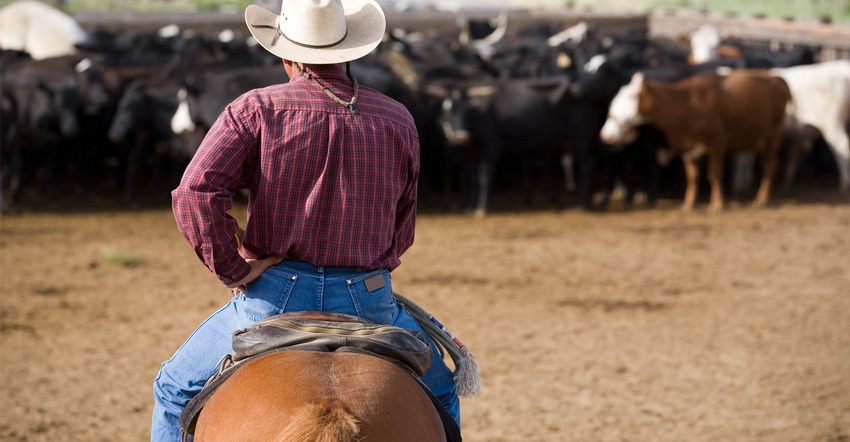May 7, 2021

Go any place on this planet wearing a cowboy hat, and you are instantly identifiable as an American.
Whether they’re riding in a rodeo arena or on the range, cowboys represent freedom, guts and grit. From silver screen legends like John Wayne to the small screen juggernaut that is “Yellowstone,” cowboys are now and forever will be linked as an icon of America. They influence everything from fashion to hobbies and home décor.
So how is it that in the last few years everyone wants the cowboy, but no one wants the cows?
Scape-cow
It’s not the science. The science tells us that cattle are not the greenhouse gas boogeyman that are destroying the ozone one belch at a time. Frank Mitloehner, a professor and air quality specialist at the University of California, Davis, Department of Animal Science, is a renowned expert in this field. He says that if you consider the transportation, power production and cement industry sectors, those three combined emit 80% of all greenhouse gases in the United States. Meanwhile, the dairy industry and beef industries combined are at about 5%.
Gee, I’m no math whiz, but how is cutting out meat out of your diet while still flying to Cancun for that Instagram vacation picture going to make a bit of difference?
Unless, it’s not about the science, but one more way to vilify animal agriculture and further entrench our political divide?
The stampede
Last week, all of the cattle industry was preparing to go to war with President Joe Biden’s administration over a story in the British tabloid The Daily Mail. The story falsely connected a 2020 research study from the University of Michigan and Tulane University to Biden’s recently announced climate goals, and stated that Biden’s plan would limit Americans to 4 pounds of beef a year.
That study, by the way, found that replacing half of animal products with plant-based products would prevent more than 1.6 billion tons of greenhouse gas by 2030. Now, according to the U.S. EPA, the transportation, electric and industrial sectors, just in the year 2019, emitted about 3.9 billion tons of greenhouse gases. Just so the numbers are clear.
The irony of the situation is that Biden’s plan never puts forth any such limitation on beef or on agriculture. And everything coming from the USDA, USDA Secretary Tom Vilsack, and the U.S. House and Senate ag committees points to incentivizing agriculture to be part of climate solutions. Including using grazing livestock as a part of the solution.
Yet, the damage was done, and a political stampede ran over every outlet and platform in the land.
Enough so that this past week, at our online North American Agricultural Journalists meeting, we asked Vilsack to clarify the issue. You can read my colleague Jacqui Fatka’s reporting here: Biden's plan won't limit meat consumption.
May is Beef Month
Every May, we share recipes and promotions celebrating National Beef Month. But at no time has it been so critical that we engage the consumer than right now. Consumers only understand the loudest voice in the room, it seems. And taking animal protein off the plate is one way businesses are trying to be that “thought leader,” not guided by science but by dollars and cents.
For example, the digital foodie magazine Epicurious vowed to stop running beef recipes as part of a misguided effort to be climate-conscious. Of course, it hasn’t run a beef recipe in over a year, and it gets advertising dollars from alternative protein companies — but that couldn’t have much to do with it, right?
So, this May, it’s time for cowboys to be the loudest voice in the room and share why cattle are important. Cattle have a purpose beyond the plate. They are part of regenerative agricultural systems that improve soil health. They upcycle forages into high-quality proteins our bodies need. They utilize marginal lands that can’t be cultivated.
And, most importantly, without cows there wouldn’t be that American icon, the cowboy.
You May Also Like




